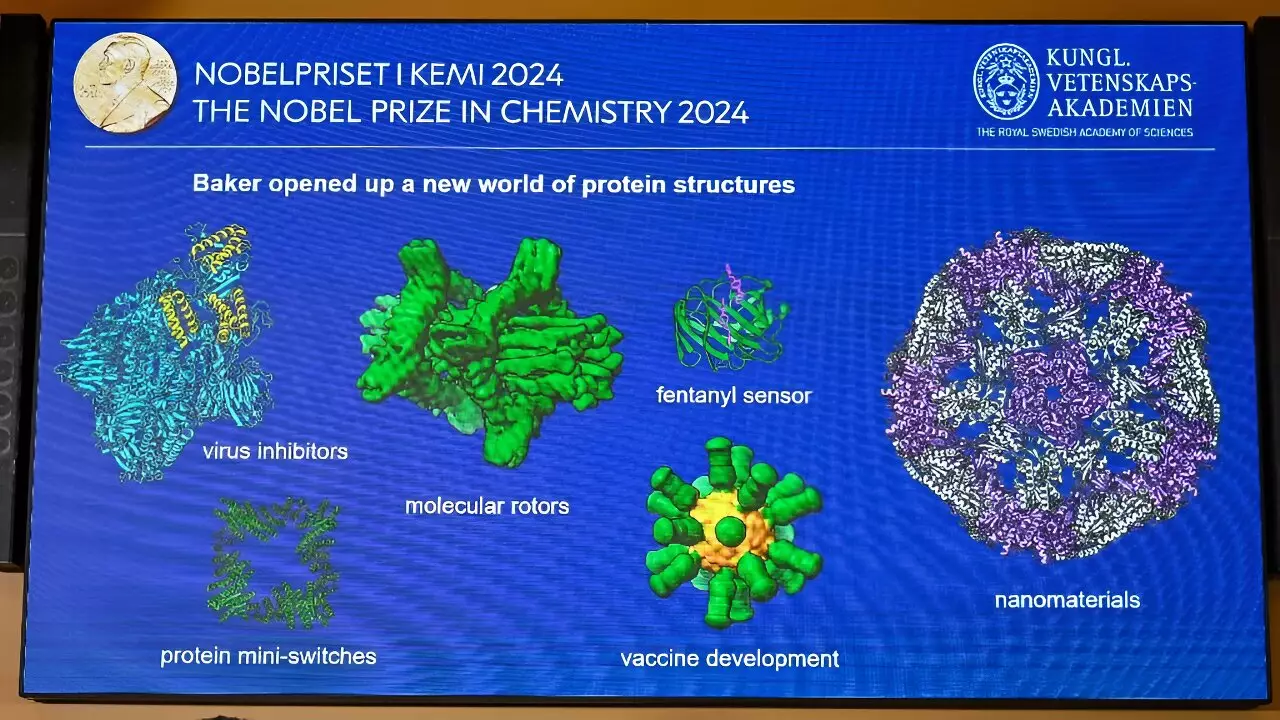The recent awarding of the Nobel Prize in Chemistry to three remarkable scientists marks a pivotal moment in the field of protein research. Demis Hassabis and John Jumper from Google’s DeepMind lab, along with biochemist David Baker, have made extraordinary advancements that are set to reshape our understanding of proteins, the essence of biological life. Their contributions—utilizing artificial intelligence to forecast protein structures and designing entirely novel proteins—hold immense implications not only in fundamental science but also in practical applications, from drug discovery to environmental remediation.
The Role of Proteins in Biology
At the heart of biological processes, proteins act as the versatile tools executing the directives encoded within DNA. As Davide Calebiro, a prominent researcher at the University of Birmingham, articulated, proteins could be viewed as “the factories of everything that happens in our body.” The interplay of DNA and proteins is crucial: DNA serves as the blueprint, while proteins do the actual work of differentiating cells into specific types, such as neurons or muscle fibers. This intricate relationship underscores the necessity to unravel the mystery of how amino acids—the building blocks of proteins—come together to form the complex three-dimensional structures essential for their functionality.
Proteins are constructed from 20 different amino acids; each unique sequence dictates how a protein will fold into its functional shape. Mary Carroll, the president of the American Chemical Society, likened the protein folding process to a telephone cord. When stretched, the cord exists as a linear form, yet it returns to a three-dimensional configuration. To tality comprehend proteins, researchers need insight into how these linear structures translate into complex 3D forms. Previous award-winning research sowed the seeds of understanding that protein folding could theoretically be predicted from amino acid sequences, yet the realization of this concept remained elusive for decades.
A Long-standing Challenge in Chemistry
The quest to accurately predict protein structures saw chemists embroiled in a challenging uphill battle spanning over 50 years, illustrated by events such as the “Protein Olympics,” where repeated failures plagued the forecasting attempts. This stalemate persisted until the revolutionary introduction of artificial intelligence by Hassabis and Jumper. Their AI model, AlphaFold, was trained on an extensive dataset of known sequences and their respective structures. By comparing unknown sequences against this database, AlphaFold could reconstruct 3D protein structures, effectively transcending previous barriers. The breakthrough came with AlphaFold2, which significantly outperformed its predecessor and demonstrated astonishing predictive accuracy at the 2020 Protein Olympics, leading organizers to finally declare the challenge resolved.
Conversely, David Baker’s approach represents a different but equally transformative strategy in protein science. Rather than predicting existing structures, Baker’s work involved creating entirely new proteins that had never existed in nature. He employed a sophisticated computational tool, Rosetta, which navigated through established protein databases to find fragments analogous to the desired structure. By adapting and altering these fragments, Rosetta derived sequences capable of yielding the newly designed proteins—an endeavor that epitomizes innovation in synthetic biology.
The implications of mastering protein design are vast and varied. As highlighted by the Nobel Foundation, understanding proteins on this level opens doors to investigate life’s fundamental processes, elucidate the mechanisms behind diseases, and explore solutions to pressing issues such as plastic biodegradation and antibiotic resistance. The potential to engineer novel proteins can lead to revolutionary advancements in nanomaterials, therapeutics, and eco-friendly chemical processes.
Baker’s visionary remarks concerning the design of protective proteins against pandemics encapsulate the spirit of this award. He expressed excitement about a potential nasal spray containing engineered proteins that could offer defense against various viruses—an idea that has sparked imaginations worldwide. Calebiro aptly emphasized the transformative nature of this research, anticipating that we are merely scratching the surface of a new era in biochemical exploration.
The 2023 Nobel Prize in Chemistry awarded to Hassabis, Jumper, and Baker acknowledges monumental strides in protein science. Their work exemplifies how artificial intelligence can revolutionize traditional scientific challenges and opens pathways to harness proteins’ potential for practical applications that could enhance public health and environmental sustainability. As the scientific community embarks on this new chapter, the future promises a bounty of innovations that could radically change lives.


Leave a Reply